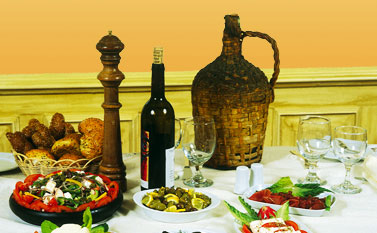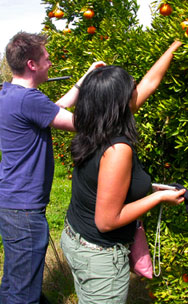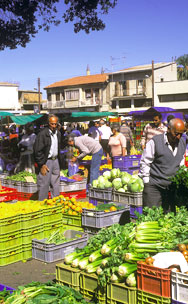- Villa search

- Canaries
- Caribbean
- Croatia, Bulgaria and Hungary
- Cyprus
- Florida
- France and Corsica
- Greece
- Italy
- Lakes and Mountains
- Madeira
- Malta and Gozo
- Portugal
- South Africa
- Spain - Balearics
Information
Related articles

More meze, please!
Cyprus is so proud of its culinary traditions that it has launched a scheme to promote its unique local foods. Jane Archer indulges in some of the finest fare the sunshine isle has to offer
I looked across the room and groaned. My stomach was telling me it couldn’t eat any more, but my eyes were eagerly watching the waiters bringing out yet more dishes. Welcome to the traditional Cypriot meze – short for mezedhes, which means ‘little delicacies’.

Orange picking
Anyone who’s been to Cyprus will have had meze – a meal made up of a multitude of dishes, starting with bread and dips, moving through grilled halloumi goats’ cheese, stuffed vine leaves and stuffed peppers, kalamari, sheftalia (a minced pork and herb sausage) and meatballs, and ending with afelia (pork cooked in red wine and coriander), stifado (beef and onion stew) and kleftiko (lamb wrapped in herbs and baked).
Traditional meze consists of up to 30 dishes. By dish number 20 your eyes start to water, by number 25 you’re screaming for mercy and by number 28 you simply have to throw in the towel.
There’s a trick to eating meze, my Cypriot hosts told me. Go slowly at the start, don’t tuck into the first dishes as if you haven’t eaten for a week, and don’t think you have to finish every dish.
But it doesn’t have to be meze, although it will be on the menu for those with time on their hands (it really can’t be rushed) and brave enough to try. You could also have dips for starters, followed by kleftiko or stifado as a main dish. Or try authentic Cypriot moussaka. Or souvlakia, which are kebabs – but watch out, they can be huge.
Village food is mostly cooked in olive oil, so in the main it’s very healthy. Until you get to the desserts, that is. Favourite dishes are baklava, a filo pastry soaked in syrup, or loukoumades, which are doughnuts, also in syrup. Make your excuses and stick to coffee – unless you have a very sweet tooth.
Proud traditions

Market day
Although not exclusive to Cyprus – Meze is eaten in many countries around the Mediterranean – it's something the Cypriots are particularly proud of. In fact, they’re so proud of all their traditional fare, which has been influenced by the many cultures that have invaded Cyprus over the centuries, that the tourist authorities on the island where Richard the Lionheart landed on his way to the Holy Land in the 12th century have launched a new crusade to promote local food and wine served in village tavernas.
The Cyprus Tourist Organisation’s campaign is called Vakhis, named after a famous Cypriot chef who lived in the ancient city of Kition back in about 300AD.
To qualify for the marque, tavernas must be in rural areas and serve authentic Cypriot food prepared in traditional ways. It must be freshly cooked, using locally grown fruit, veg and meat, just as they would eat in the villages. So expect a lot of olives, lettuce and tomatoes as starters, lemons (because there are so many grown on the island), halloumi cheese – which is still hand-made at about 50 smallholdings – and plenty of lamb and pork dishes.
home | destinations and editorial | villa search | property for sale | car hire | flights | services
villaseek blog | contact villaseek | links and resources | advertise your villa© Dune Root Ltd and Villaseek.com 2012 - Caribbean
- Canaries